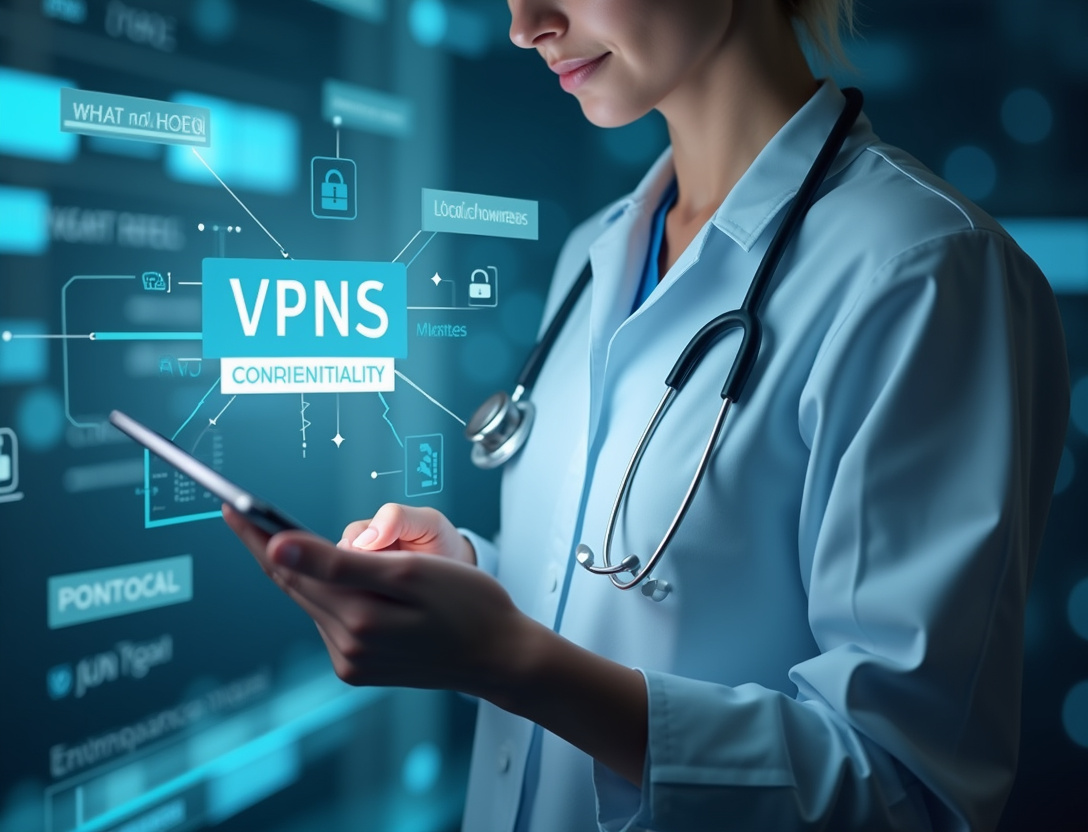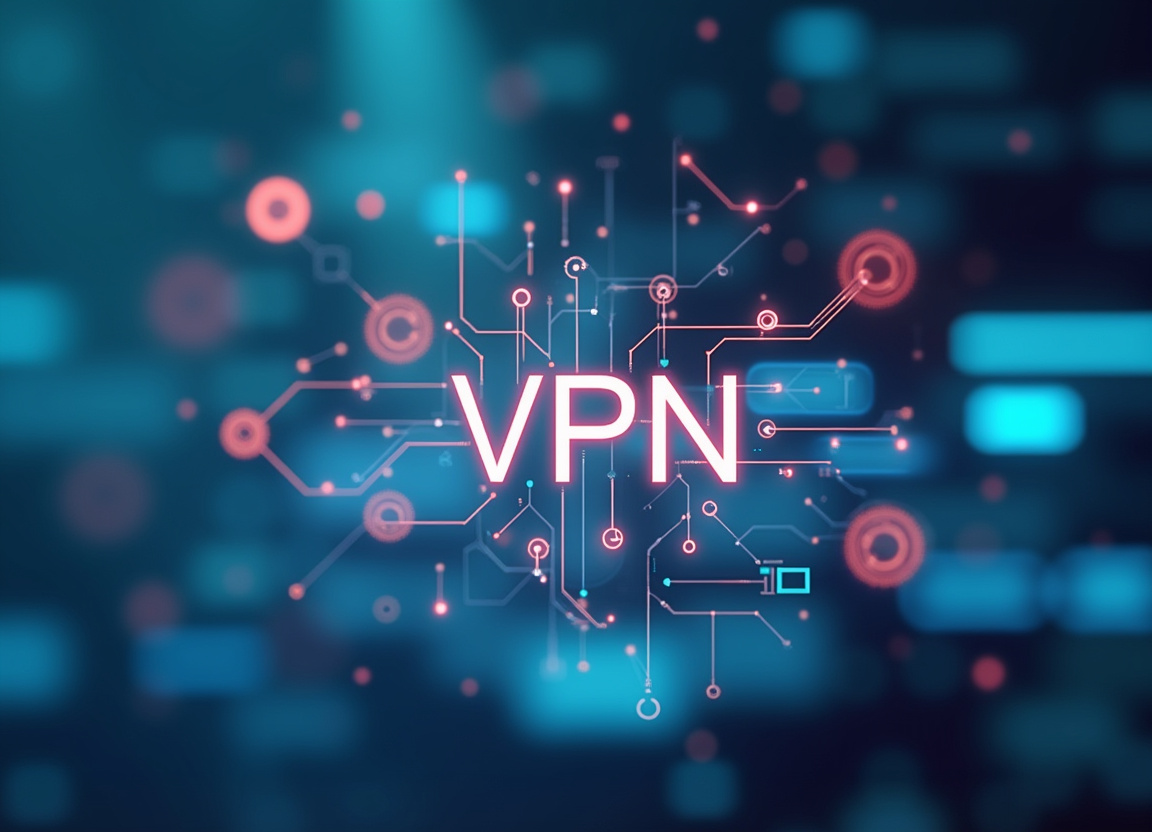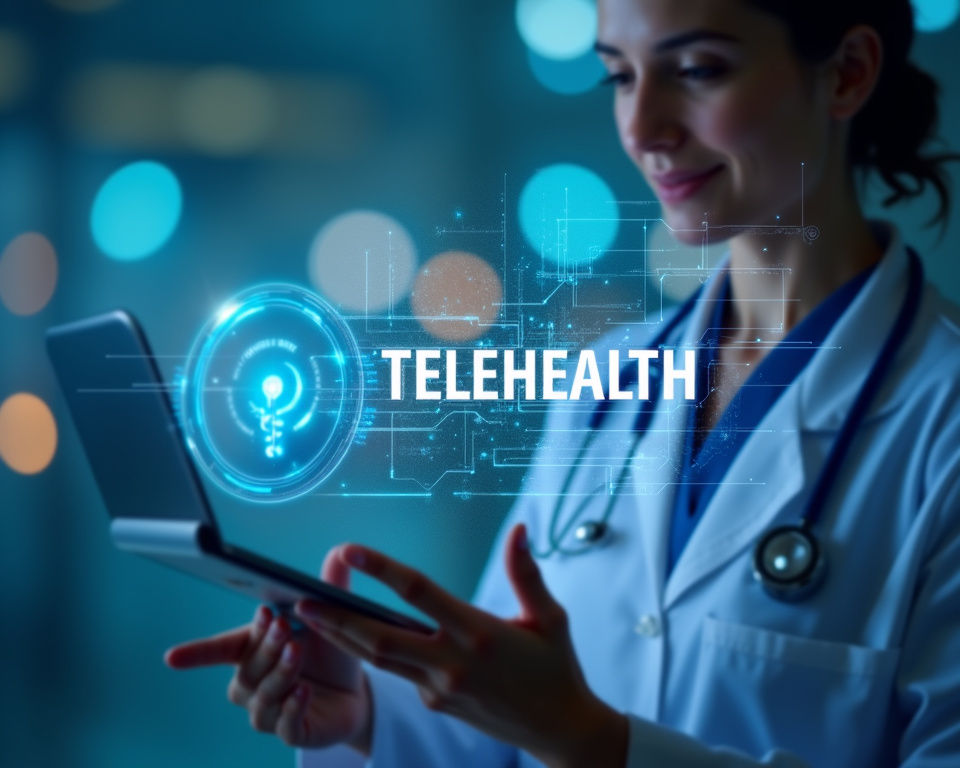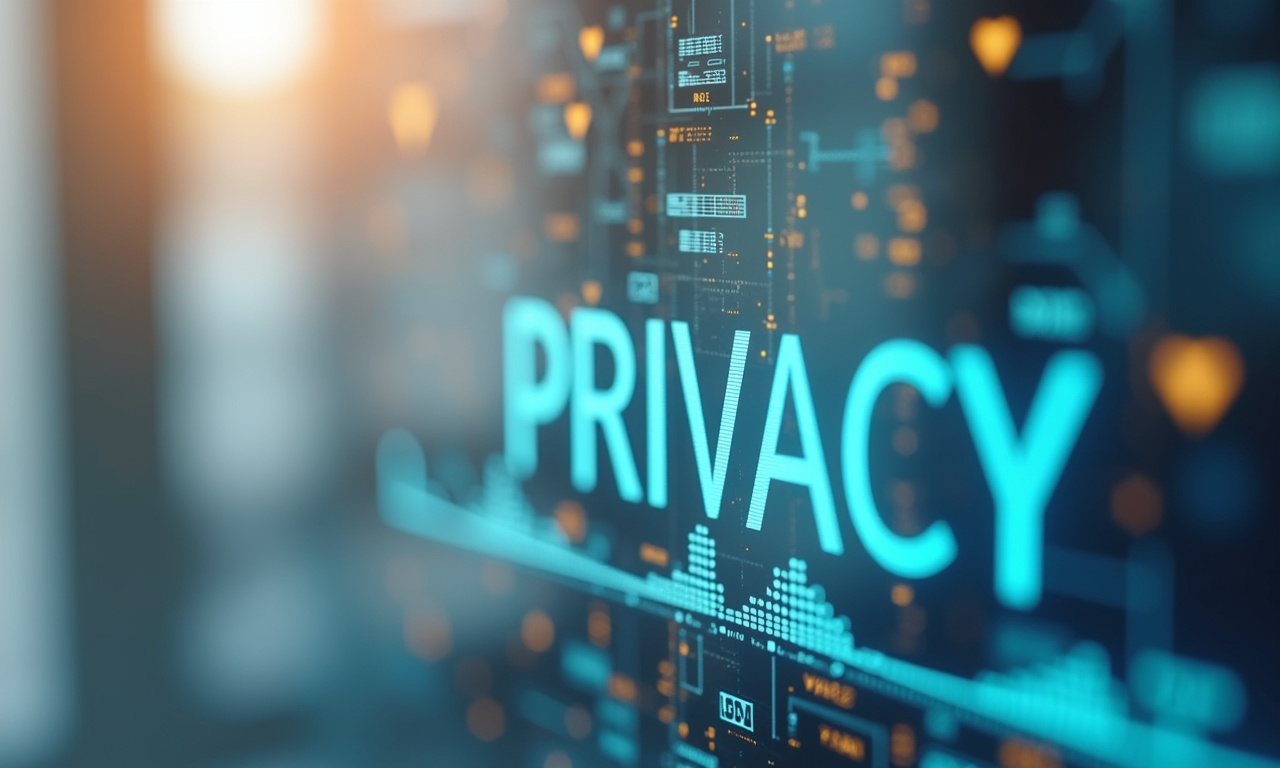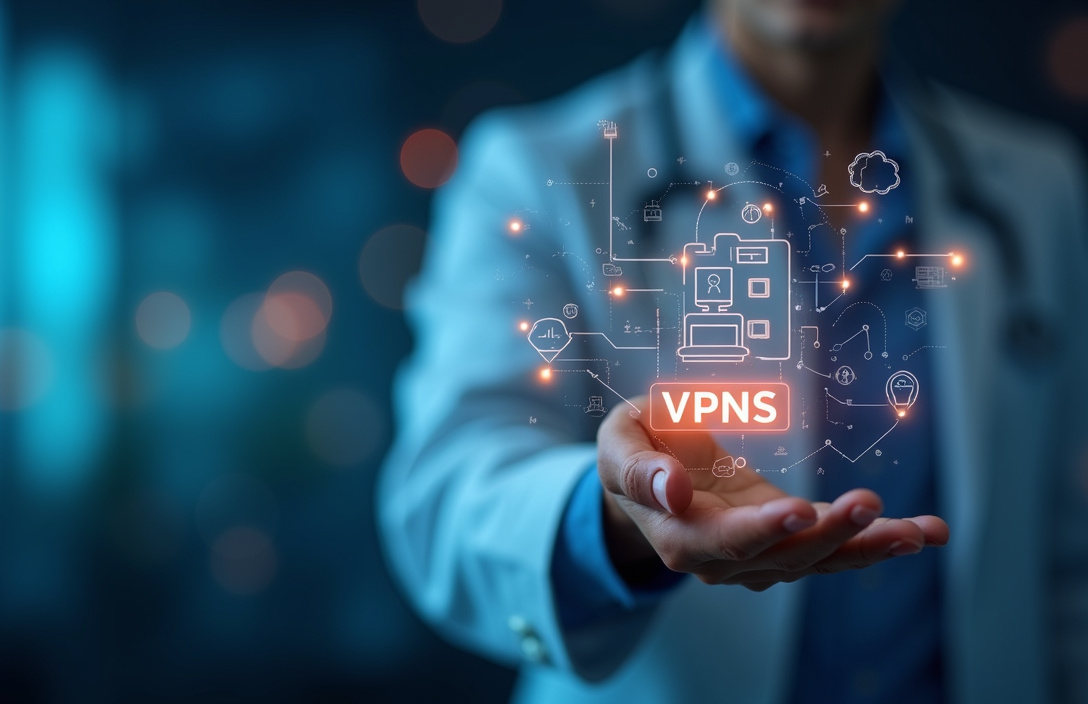VPNs for Medical Transcription: Securing Patient Records
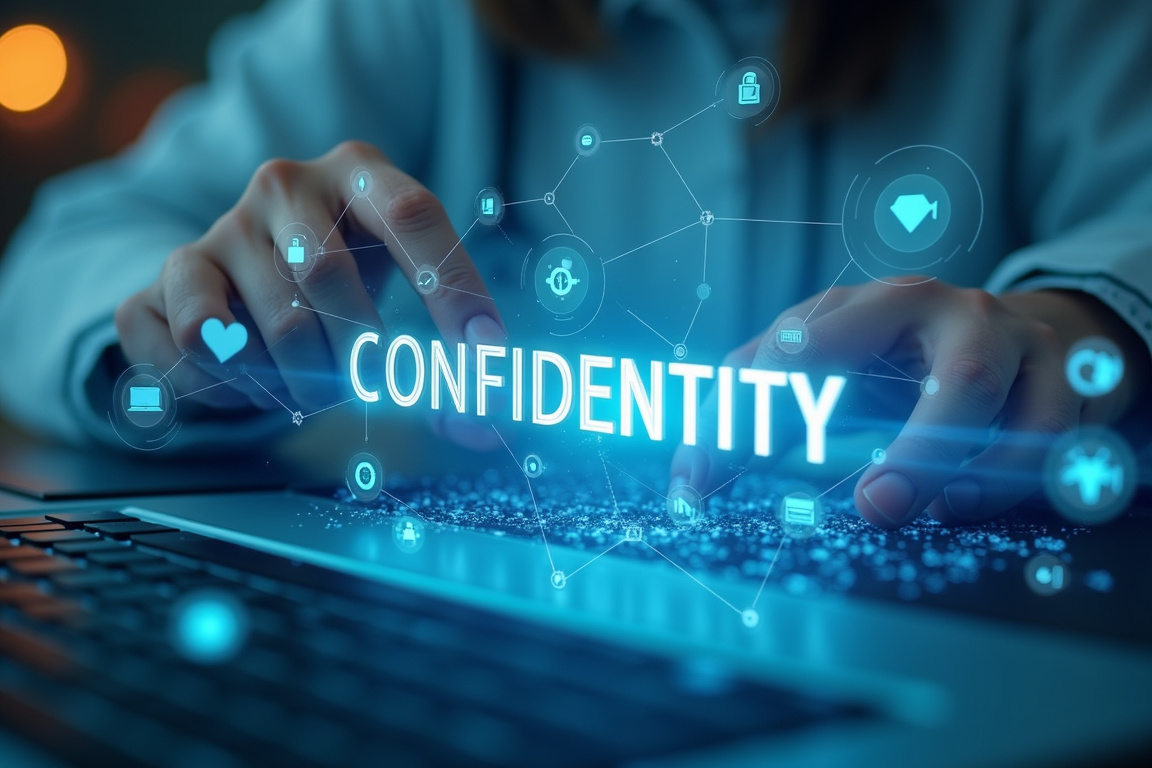
Table of Contents
Understanding the Risks: Why Security Matters in Medical Transcription
In the intricate world of healthcare, where precision and confidentiality reign supreme, medical transcription stands as a critical bridge between spoken words and documented records. Medical transcriptionists, the unsung heroes of this process, diligently convert audio recordings of physician consultations and diagnoses into accurate written reports, ensuring seamless communication and comprehensive patient documentation. However, this essential task often involves handling highly sensitive patient data, making data security and confidentiality paramount.
As the healthcare landscape embraces remote work and digital tools, the vulnerability to cyber threats and data breaches has intensified, highlighting the urgent need for robust security measures. A Virtual Private Network (VPN) emerges as a vital tool for safeguarding patient records during medical transcription, offering a secure tunnel for data transmission and enhancing overall data confidentiality. This article explores the significance of VPNs in medical transcription, emphasizing their role in ensuring patient record security, maintaining data confidentiality, and fostering secure healthcare communication.
By understanding the threats faced and the benefits offered by VPNs, medical transcriptionists and healthcare organizations can proactively adopt measures to protect sensitive patient information and uphold ethical and legal obligations. The success of medical transcription fundamentally depends on the accuracy and integrity of transcribed patient data. Errors or omissions in transcribed reports can lead to misdiagnosis, improper treatment, and potentially life-threatening consequences.
Consider a transcriptionist misinterpreting a physician's dictation regarding medication dosage, resulting in a tenfold error in the prescribed amount. Such a mistake could have dire ramifications for the patient's health and well-being. Therefore, the unwavering pursuit of accuracy in medical transcription is not merely a matter of professional competence but a quintessential necessity for patient safety.
Accurate transcription assures healthcare providers access to the most precise and up-to-date information, fostering informed decision-making and optimized holistic patient care. Ethical implications of handling patient data in medical transcription mandate unwavering adherence to stringent confidentiality principles. Healthcare providers are entrusted with profoundly sensitive information about patients' comprehensive medical histories, nuanced diagnoses, therapeutic treatments, and deeply personal circumstances.
Medical transcriptionists, duly entrusted as custodians of this delicate data, must invariably respect absolute inviolability of privacy and sacrosanct confidentiality of those entrusted to their care. Any breach, even a minor inadvertent one, of patient confidentiality can unleash severe, far-reaching consequences, including daunting legal repercussions, irreparable reputational damage, and catastrophic erosion of faith and inherent trust in the healthcare system itself. To invariably uphold highest ethical benchmarks, medical transcriptionists must methodically implement robust, state-of-the-art security measures, meticulously employing VPNs, staunchly preventing any form of unauthorized access, any potential disclosure, or any unacceptable alteration of sensitive, protected patient data.
Furthermore, continual, regularly scheduled training and highly informative awareness programs remain vitally essential, reinforcing utmost importance and significance assigned to confidentiality, guaranteeing full, unflinching compliance with evolving ethical guidelines and stringent legal regulations. The intersection of technology and healthcare demands a heightened awareness of security protocols, especially when dealing with sensitive patient information.
VPN Fundamentals: How They Protect Sensitive Data
The healthcare industry, a treasure trove of sensitive patient data, is an increasingly attractive target for cyberattacks. Cybercriminals relentlessly seek vulnerabilities in healthcare systems to pilfer medical records, financial information, and other valuable data. These attacks range from ransomware incidents that encrypt entire databases to data breaches exposing personal health information to unauthorized parties.
The consequences of these attacks can be devastating. Beyond financial losses and reputational damage, legal liabilities and disruptions in patient care can severely impact healthcare organizations and their patients. The compromised data can be exploited for identity theft, insurance fraud, and other malicious activities, further harming patients and undermining trust in the healthcare system.
Therefore, proactive cybersecurity measures are paramount for protecting patient data and ensuring the continuity of healthcare services. Securing healthcare communication channels is paramount for the safe and reliable transmission of patient information. Data is frequently exchanged between healthcare providers, insurance firms, laboratories, and stakeholders in today's interconnected healthcare ecosystem.
These channels are susceptible to interception, eavesdropping, and tampering, potentially exposing sensitive patient data to unauthorized access. Robust security measures are necessary to mitigate these risks. Healthcare organizations must implement encryption, authentication protocols, and secure messaging platforms to protect data in transit.
Secure communication channels not only safeguard patient privacy but also maintain the integrity and availability of healthcare data, ensuring its accuracy, completeness, and accessibility when needed. This is particularly crucial in medical transcription, where reports containing sensitive patient information are frequently transmitted electronically. The need for secure healthcare communication grows as telemedicine and remote consultations become increasingly common.
The legal and regulatory framework surrounding patient data security is continuously evolving, reflecting the growing acknowledgment of protecting sensitive information. Laws like the Health Insurance Portability and Accountability Act (HIPAA) in the United States, the General Data Protection Regulation (GDPR) in Europe, and other international data privacy regulations impose stringent requirements on healthcare providers and business associates. These regulations mandate administrative, physical, and technical safeguards to prevent unauthorized access, use, or disclosure of protected health information (PHI).
They also outline breach notification requirements, outlining the steps organizations must take if patient data is compromised. Non-compliance can trigger substantial financial penalties, legal liabilities, and reputational damage. Medical transcriptionists and healthcare organizations must vigilantly remain informed about relevant laws and regulations, proactively implementing measures to guarantee compliance and safeguarding patient data.
Ongoing training, regular risk assessments, and audits are essential components of a comprehensive compliance program.
Implementing a VPN: Practical Steps for Transcription Services
A VPN establishes a cryptographically secure, encrypted connection between a user's device and a remote server, effectively masking their IP address and transforming all transmitted data into an unreadable code. This "tunnel" effectively prevents eavesdropping and interception of sensitive information, such as patient records during medical transcription. When a medical transcriptionist connects to a VPN server, all internet traffic is rerouted through this secure tunnel, sheilding it from attackers lurking on public Wi-Fi networks or attempting to intercept and steal data in transit.
Consider a transcriptionist working from a coffee shop; without a VPN, their data is vulnerable. Encryption algorithms used by VPNs ensure that even if the data is intercepted, it remains unintelligible to unauthorized parties lacking the cryptographic keys. This is fundamental for medical transcriptionists working remotely or in shared office spaces where network security isn't guaranteed.
By using a VPN, medical transcriptionists secure their internet and protect patient records from unauthorized access, maintaining data confidentiality and complying with legal and ethical demands. Data encryption transforms "plaintext" data to unreadable format, rendering it unintelligible to unauthorized parties. Encryption algorithms transform the data, needing decryption to restore it.
VPNs employ robust encryption protocols, such as AES, to encrypt all data transmitted through their tunnel. AES is broadly recognized as a secure encryption algorithm used by governments and financial institutions. The key length determines encryption strength, with longer keys providing superior security.
VPNs use AES encryption with 128-bit or 256-bit, offering solid protection. By encrypting via the VPN tunnel, medical transcriptionists can be sure that patient records will remain protected. A Kill switch is a feature found in many VPN applications, acting as a fail-safe mechanism that automatically disconnects the user's device from the internet if the VPN connection drops.
This is of utmost importance because if the VPN connection fails, even momentarily, the device reverts to using its default internet connection, potentially exposing unsecured data. A kill switch ensures that no unencrypted data is transmitted if the VPN connection is interrupted, preventing accidental data leaks and maintaining continuous protection of sensitive information. This feature is particularly valuable for medical transcriptionists, as it provides an extra layer of security to prevent PHI from being exposed due to VPN connectivity issues.
By automatically cutting off the internet connection when the VPN fails, the kill switch eliminates the risk of transmitting unencrypted patient data, reinforcing the confidentiality and integrity of medical records. The use of multi-factor authentication (MFA) adds another layer of security to VPN access, requiring users to provide multiple verification factors before being granted access to the VPN server.
Beyond VPNs: Comprehensive Security Strategies
Choosing the right VPN for medical transcription is a critical decision that requires careful consideration of several factors. The VPN must offer robust security features, reliable performance, and compliance with relevant regulations to ensure the protection of patient data. When evaluating VPN options, medical transcriptionists and healthcare organizations should prioritize security features such as strong encryption protocols (e.g., AES-256), a kill switch, DNS leak protection, and a strict no-logs policy.
A no-logs policy ensures that the VPN provider does not track or store any user activity, further safeguarding privacy and confidentiality. Additionally, the VPN should have a wide range of server locations to allow users to connect to servers in different regions, potentially improving performance and bypassing geo-restrictions. The reliability and speed of the VPN connection are also important considerations, as slow or unstable connections can disrupt the transcription workflow and impact productivity.
Furthermore, the VPN provider should offer responsive customer support to assist users with any technical issues or questions they may encounter. Finally, it is essential to verify that the VPN provider complies with relevant data privacy regulations, such as HIPAA or GDPR, to ensure that patient data is handled in accordance with legal requirements. The implementation of a VPN should be integrated into a broader security strategy that includes other measures to protect patient data, such as strong passwords, regular software updates, and employee training on security best practices.
VPN configuration is crucial to establishing a secure and reliable connection. Choose a strong password, enable multi-factor authentication, configure the kill switch, and select the appropriate encryption protocol. Regular software updates and security patches are crucial for addressing bugs and vulnerabilities, fortifying the VPN against evolving threats.
Medical transcriptionists should enable automatic updates to receive prompt security protection. Educating employees on VPN security practices is also necessary. Explain the risks of using public Wi-Fi without a VPN, and encourage the importance of reporting suspicious activity.
An example of training could demonstrate how to identify phishing emails designed to steal VPN login credentials, emphasizing never clicking suspicious links or entering credentials on untrusted websites. Clear security policies and regular security audits are essential, especially when handling sensitive patient data.
In conclusion, the integration of VPNs into medical transcription workflows is not merely a technological upgrade but a crucial step towards safeguarding patient record security, upholding data confidentiality, and ensuring secure healthcare communication. The rising tide of cyber threats and the increasing reliance on remote work underscore the urgent need for robust security measures to protect sensitive patient information. By creating a secure, encrypted tunnel for data transmission, VPNs effectively shield patient records from unauthorized access and interception, maintaining data confidentiality and complying with legal and ethical obligations.
Medical transcriptionists and healthcare organizations must recognize the vital role of VPNs in protecting patient data and proactively implement measures to integrate them into their workflows. This includes selecting a VPN that offers robust security features, reliable performance, and compliance with relevant regulations, as well as ensuring proper configuration and ongoing maintenance. Moreover, the implementation of a VPN should be part of a comprehensive security strategy that encompasses other measures such as strong passwords, regular software updates, employee training on security best practices, and clear security policies.
As the healthcare industry continues to evolve and embrace new technologies, the importance of data security and patient privacy will only continue to grow, requiring ongoing vigilance and adaptation. By investing in VPNs and other security measures, medical transcriptionists and healthcare organizations can demonstrate their commitment to protecting patient data and maintaining the trust that is essential for providing high-quality healthcare services. This also involves staying informed about the latest security threats and vulnerabilities and adapting their security measures accordingly.
Regular security audits and risk assessments can help identify potential weaknesses in their security posture and ensure that their security measures are up-to-date and effective. Furthermore, collaboration and information sharing among healthcare organizations, security experts, and government agencies can help improve overall cybersecurity preparedness and response capabilities. By working together, they can better protect patient data and maintain the integrity of the healthcare system.
Ultimately, the protection of patient data is a shared responsibility that requires the active involvement of all stakeholders in the healthcare ecosystem. By recognizing the importance of data security and investing in appropriate security measures, medical transcriptionists and healthcare organizations can safeguard patient records, uphold ethical obligations, and ensure the delivery of high-quality healthcare services.
Stay Updated
Get the latest VPN news, tips, and exclusive deals to your inbox.
